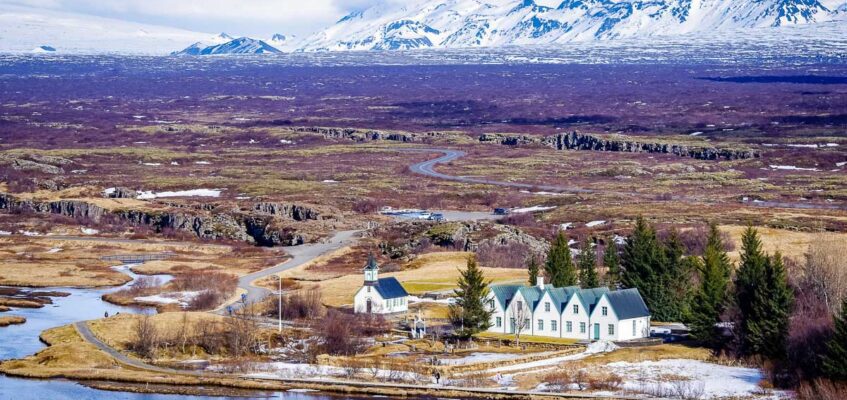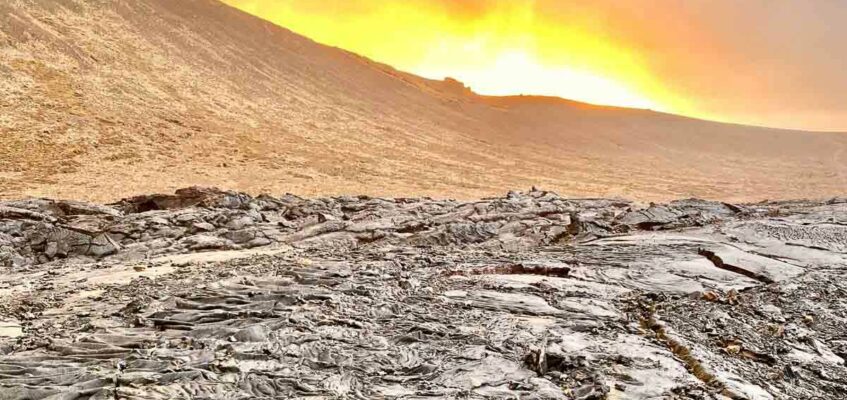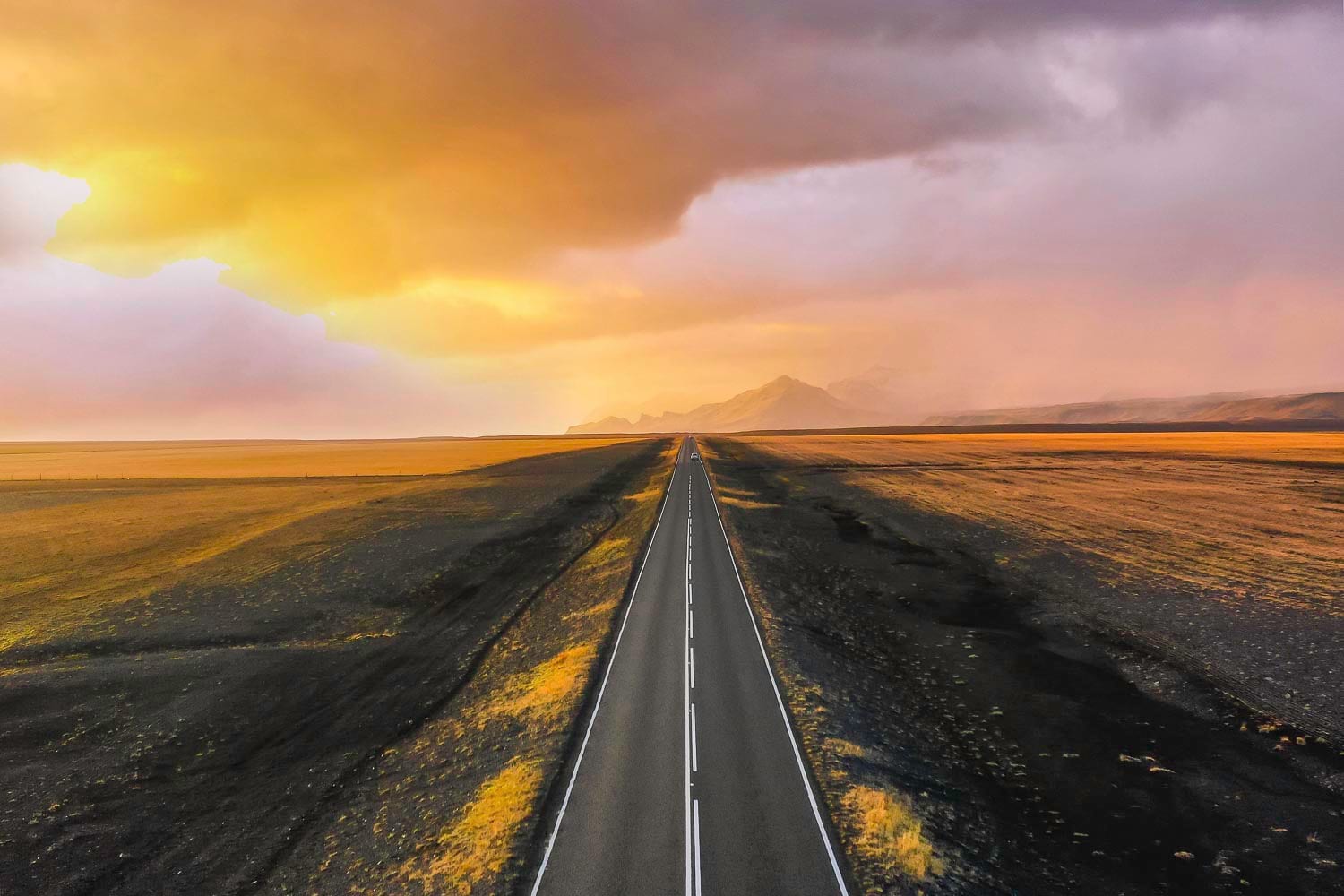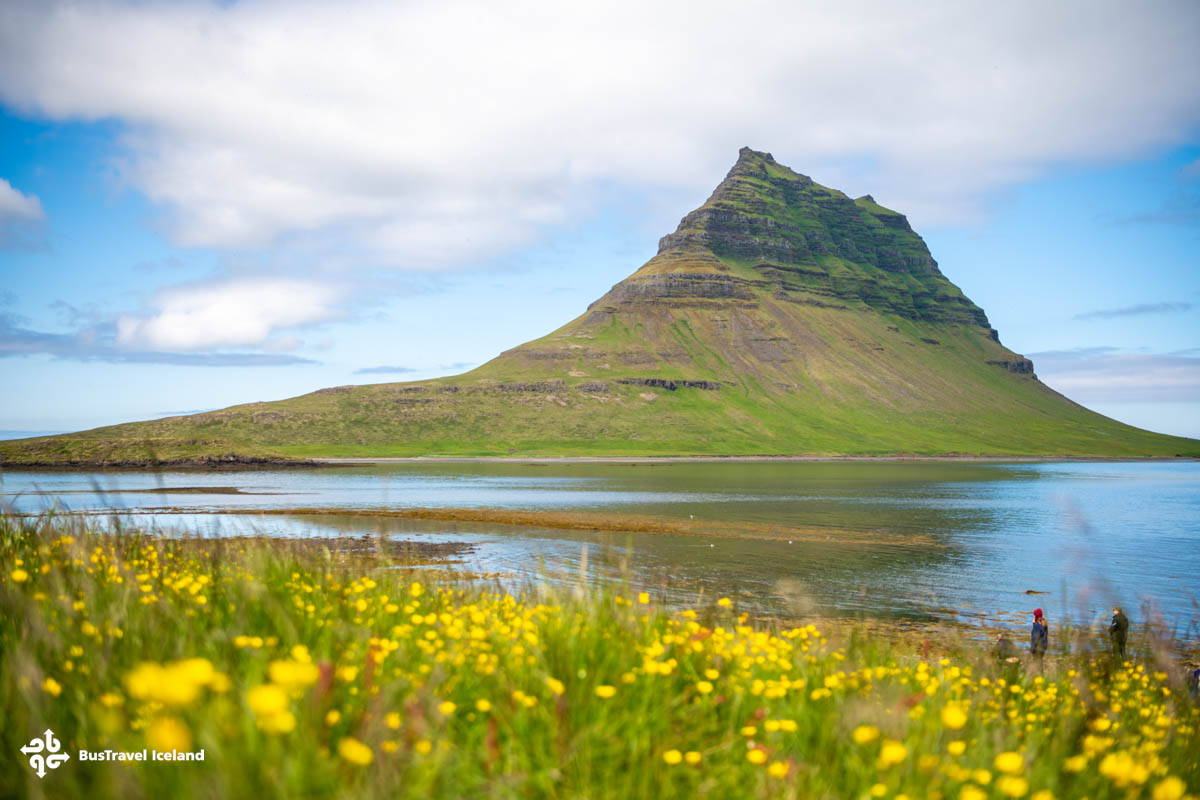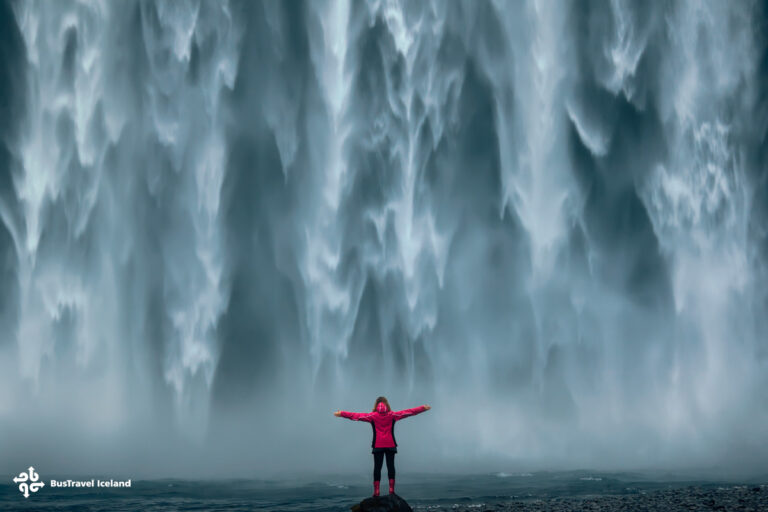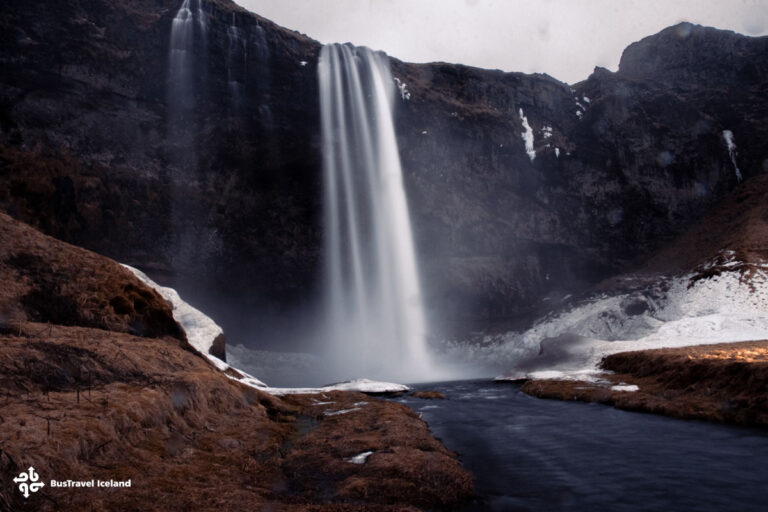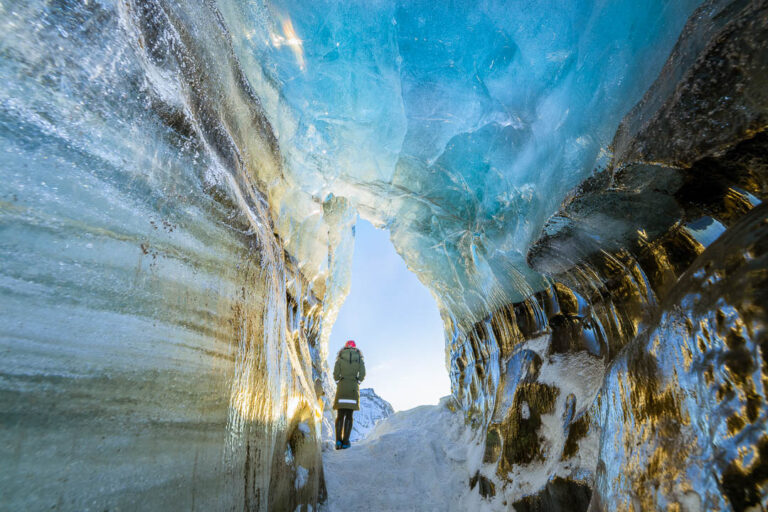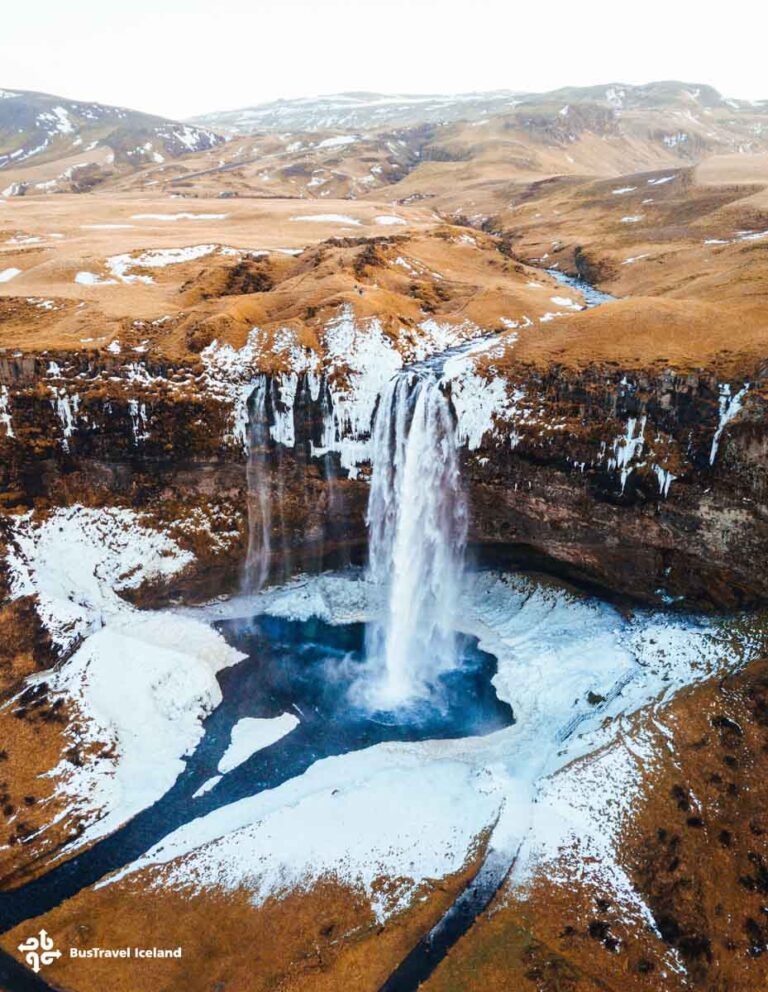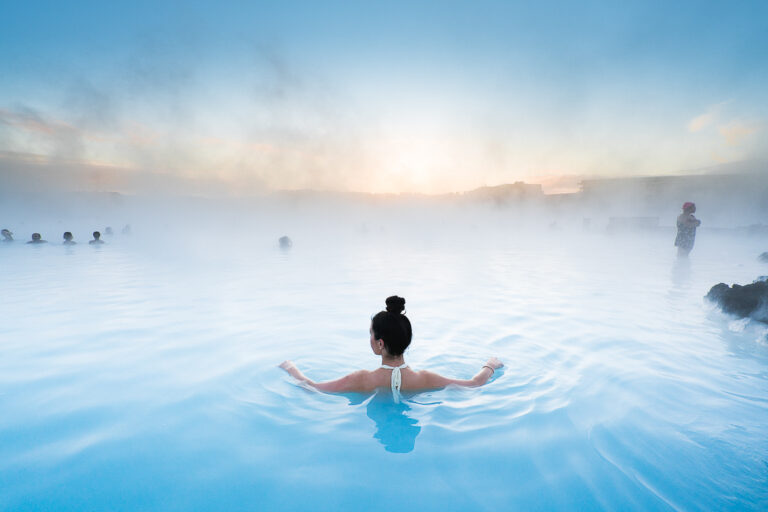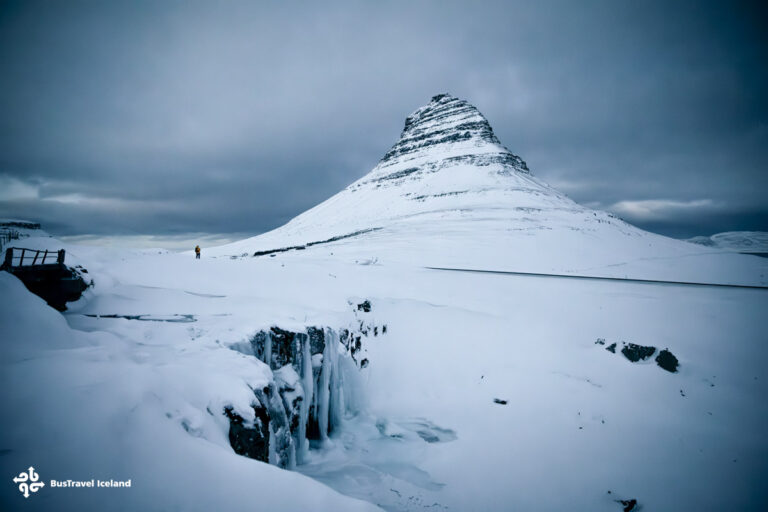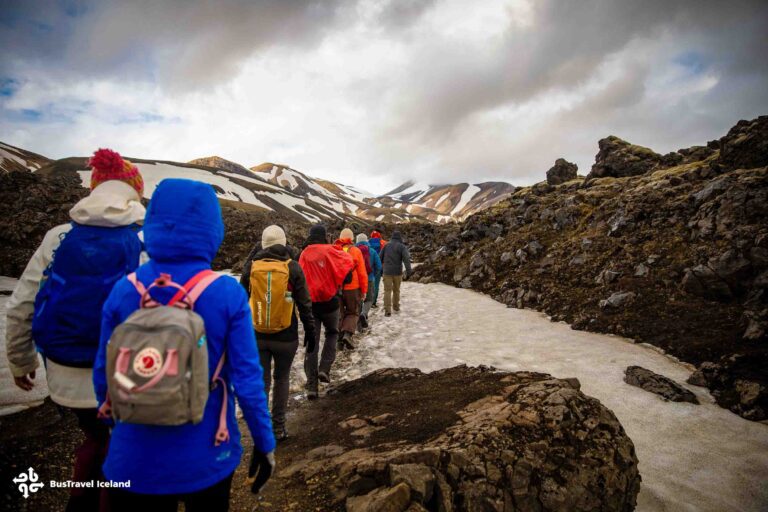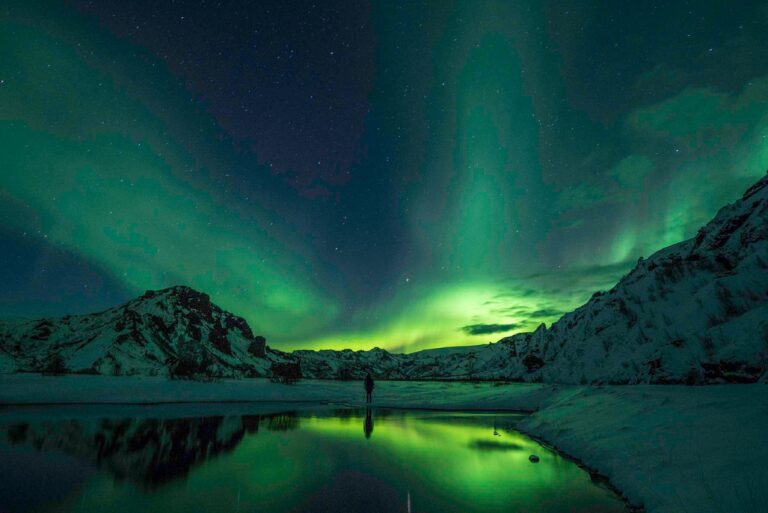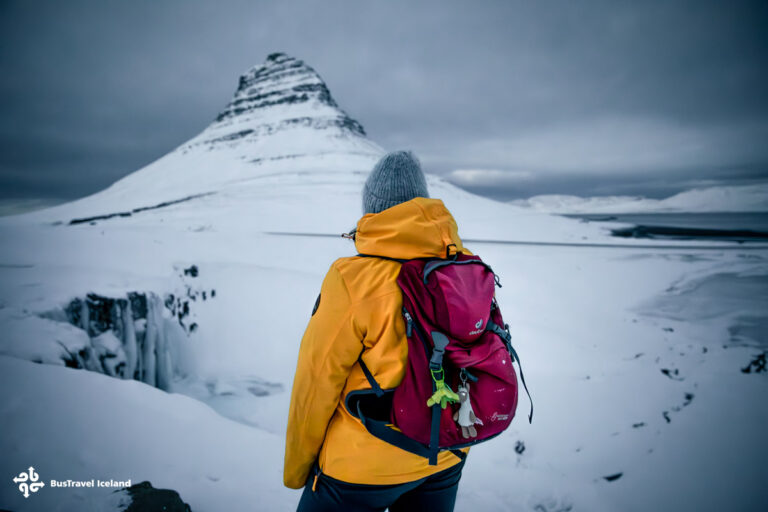Top 5 Lesser Known Places in Iceland Worth A Visit
- Golden Circle Iceland, Good to Know, Reykjavik, Ring Road of Iceland, South Iceland
- 17 Dec 2024

Iceland, often called the Land of Fire and Ice due to its unique geographic features, is renowned for its breathtaking and awe-inspiring landscapes. Beyond its famous landmarks, even the lesser-known spots reveal a beauty that is equally captivating and unforgettable.
Some of these hidden treasures are so distinct that they’re well worth a visit.
Let me take you through five lesser-known attractions that deserve a spot at the top of your must-see list.

1. Yoda Cave in South Iceland
In the remote southern reaches of Iceland, tucked into the dramatic volcanic landscapes near Vík í Mýrdal, lies the Yoda Cave—a geological marvel with a playful connection to pop culture. Officially named Hjörleifshöfði Cave, this natural wonder earned its moniker thanks to its uncanny resemblance to the face of Yoda, the legendary Jedi Master from the Star Wars saga.
While Iceland is celebrated for its iconic attractions, such as the Blue Lagoon and Gullfoss waterfall, its lesser-known treasures are equally compelling. The Yoda Cave, a short detour off the famed Ring Road, is one such destination.
Set against a backdrop of black sand beaches, basalt cliffs, and volcanic ridges, the cave offers visitors a unique blend of natural beauty and whimsical charm. Nearby, landmarks like the Reynisfjara black sand beach and the Dyrhólaey Arch add to the allure of the area, making it a must-visit for adventurous travelers.
The cave itself is a testament to the power of nature, formed over millennia by the relentless forces of wind and water erosion. From certain angles, its contours take on a Yoda-like visage, making it a favorite stop for photography enthusiasts and Star Wars fans alike. Though no scenes from the films were shot here, its connection to the beloved franchise has cemented its place as one of Iceland’s quirkiest attractions.
Whether you’re drawn to its geological intrigue or its pop culture appeal, the Yoda Cave stands as a reminder that some of Iceland’s most extraordinary experiences are found off the beaten path.

How to Get to the Yoda Cave in Iceland?
As the Yoda Cave is a lesser known attraction, it’s best to be visited by self-drive.
When you start your journey from Reykjavik, you will need to drive along the Ring Road (Route 1) heading southeast for approximately 180 km (112 miles). The journey takes about 2.5 to 3 hours.
When you start from Vik or after you reach Vik from Reykjavik, the journey is only roughly a 15-minute drive (approximately 15 km or 9 miles) from Vík.

After leaving the charming village of Vík, continue on the Ring Road (Route 1) as it winds through the stunning southern Icelandic landscape. Keep an eye out for the turnoff to Hjörleifshöfði, a gravel road that marks your path to the Yoda Cave. Make a right turn onto this road and follow it until you reach the designated parking area, conveniently located near the cave’s entrance. From there, it’s just a short walk to discover the cave.
For those seeking a hassle-free visit to the Yoda Cave and a deeper exploration of Iceland’s stunning landscapes, booking a private tour to South Iceland is an excellent option. This is particularly cost-effective for groups, as the more participants join, the lower the cost per person. Simply request your travel planner to include the Yoda Cave in your itinerary for a personalized experience.

If you prefer to travel independently, note that while a standard car is sufficient during the summer months, a 4×4 vehicle is recommended in winter or during bad weather to handle the rugged terrain. GPS coordinates can be a helpful tool for locating Hjörleifshöfði Cave with ease.
Be sure to allocate enough time to fully enjoy the cave and explore nearby attractions such as the iconic Reynisfjara Beach and the scenic hiking trails around Hjörleifshöfði. Conveniently located along Iceland’s famed Ring Road, the Yoda Cave is a perfect detour for adventurers eager to discover the spectacular sights scattered along Iceland’s Southern Shore.

2. Friðheimar Farm – a Hidden Gem on the Golden Circle Route
In a country where the natural elements often dictate the rules, Friðheimar Farm stands as a testament to ingenuity and sustainability. Located along Iceland’s famed Golden Circle route, Friðheimar Farm is a family-owned farm redefining agriculture in one of the planet’s most unforgiving climates.
Friðheimar’s success lies in its geothermal greenhouses, where fresh tomatoes and cucumbers are grown year-round, powered by the island’s abundant geothermal energy. For visitors, the farm offers more than just produce; it’s a window into the future of sustainable farming. Guided tours reveal how geothermal heat, clean water, and innovative technology converge to create ideal growing conditions even in the dead of Icelandic winter.

The farm’s on-site restaurant has become a culinary destination in its own right. Seated among rows of flourishing tomato plants, diners are treated to dishes that place the farm’s produce front and center. A simple yet unforgettable tomato soup paired with freshly baked bread has become a signature dish, while tomato ice cream and tomato-infused cocktails showcase the farm’s creative flair.

Friðheimar Farm also has a stable. There, you will also have the unique opportunity to see and interact with the iconic Icelandic horse, a breed deeply entwined with the nation’s identity. Known for their strength, adaptability, and unique tölt gait, these horses are celebrated through engaging demonstrations and optional rides. Guests gain a firsthand understanding of their historical significance and enduring cultural importance.
For those traveling the Golden Circle, a stop at Friðheimar Farm offers more than just a meal. It’s a lesson in resilience, sustainability, and the extraordinary ways Icelanders harness their environment. Whether you’re a traveler seeking fresh flavors or a curious observer of sustainable innovation, Friðheimar delivers an experience as nourishing as it is inspiring.

How to Get to Friðheimar Farm in the Golden Circle of Iceland?
Friðheimar Farm is conveniently located in Reykholt, along the Golden Circle, making it an easy addition to any south Iceland itinerary. Here’s how to reach it:
By Car:
From Reykjavík, head east on Route 1 (the Ring Road) until you reach Route 35, part of the renowned Golden Circle route. Follow Route 35, and you’ll see a road sign directing you to Friðheimar Farm on your right. The farm is well signposted near Reykholt and is approximately 1.5 hours from Reykjavík by car.
A visit to Friðheimar Farm is often combined with other Golden Circle attractions. After exploring Friðheimar, you can continue on Route 35 to visit the Geysir geothermal area and Gullfoss waterfall, then follow Route 37 to Þingvellir National Park. Alternatively, you can enjoy the trip in reverse order.
It’s highly recommended to book a table or contact Friðheimar in advance if you’re traveling independently, ensuring that you have access to their facilities during your visit.

By Guided Tour:
Many Golden Circle tours include a stop at Friðheimar Farm, offering a convenient option for those without a rental car or preferring a curated experience. Tour operators departing from Reykjavík frequently feature the farm as part of their itinerary, alongside landmarks like Gullfoss waterfall, Geysir, and Thingvellir.
3. Stuðlagil Glacial Canyon in East Iceland
Deep in Iceland’s eastern highlands lies Stuðlagil Glacial Canyon, a newly revealed natural wonder that has quickly become one of the country’s most striking attractions. Towering basalt columns flank the vivid turquoise waters of the Jökla River, forming a dramatic landscape that captures the raw beauty of Iceland’s volcanic origins.

This canyon, long hidden beneath the river’s powerful flow, emerged after the Jökla River was diverted for a hydroelectric project. The reduced water levels exposed the intricately sculpted basalt formations, offering a glimpse into the region’s geological past. Today, Stuðlagil stands as both a testament to Iceland’s fiery beginnings and a stunning example of nature’s artistry.

Reaching the canyon requires a drive along Iceland’s Ring Road (Route 1) before turning onto Route 923, which leads to nearby parking areas. From there, hiking trails on both sides of the river provide access to breathtaking viewpoints. Visitors are advised to wear sturdy footwear, as the terrain can be uneven and slippery.
The canyon’s appeal is heightened in summer when the contrasting hues of the basalt columns and turquoise river are at their most vibrant. For travelers seeking tranquility, Stuðlagil offers a more secluded alternative to Iceland’s busier attractions, allowing visitors to connect deeply with the rugged landscape.

Stuðlagil Glacial Canyon, a hidden treasure until recent years, has become a must-see destination for those exploring Iceland’s less-traveled paths. Its emergence as a natural marvel underscores the country’s unparalleled ability to surprise even the most seasoned adventurers.
How to Get to Stuðlagil Glacial Canyon?
Visitors to Stuðlagil Glacial Canyon, a striking natural wonder in Iceland’s eastern highlands, have two primary options for reaching its most popular viewing point, each offering a unique perspective of the basalt-lined gorge and turquoise river.
The west side route is the most direct and ideal for those seeking a quick yet stunning view. After driving along Route 923, park near Grund farm, where a short walk leads to a well-built viewing platform. This vantage point offers a close-up look at the canyon’s iconic basalt columns and vivid waters.

For a more adventurous experience, the east side route begins at a parking area near Skjödólfsstaðir farm, also off Route 923. This option features a scenic 5-6 kilometer round-trip hike along the river. While the views from this side are more distant, they provide a broader, panoramic perspective of the canyon and its rugged surroundings, perfect for those seeking a quieter, immersive journey.
Also, the east side route allows you the iconic view, including the most popular Instagram-worthy spot where the basalt cliffs stand in the middle of the glacial river, creating a striking image of Iceland’s incredible natural beauty.
Whether you prefer the easy access of the west side or the iconic, photo-worthy views of the east side, Stuðlagil Glacial Canyon promises an unforgettable experience of Iceland’s extraordinary landscapes.

Many day tours departing from Seyðisfjörður include a stop at the east side of Stuðlagil Glacial Canyon. Additionally, Ring Road tours now often feature this increasingly popular and immersive sight, offering you a chance to experience one of Iceland’s new and off-the-beaten-road attractions.
4. Fjallsarlon glacier lagoon in Southeast Iceland
In the shadow of Vatnajökull, Europe’s largest glacier, lies Fjallsárlón Glacier Lagoon, a serene counterpart to the more famous Jökulsárlón. Here, in southeast Iceland, nature’s artistry takes center stage as massive icebergs drift silently across the lagoon’s icy waters, offering visitors a rare moment of tranquility amidst the country’s dramatic landscapes.

Fjallsárlón is often overshadowed by its larger neighbor, Jokulsarlon, but its quieter ambiance is precisely what makes it special. The lagoon’s setting, framed by the Fjallsjökull Glacier and volcanic ridges, provides a stark reminder of the powerful forces that continue to shape Iceland. For those seeking a more intimate experience, it’s a gem waiting to be discovered. Boat tours are among the highlights at Fjallsárlón, taking visitors closer to the glacier and its floating ice sculptures. These guided excursions provide not just awe-inspiring views but also insights into the geology and glacial activity that define the area.
For those who prefer to stay on land, walking paths and viewing platforms offer equally stunning vistas, perfect for photography or quiet contemplation. While Jökulsárlón attracts much of the attention, Fjallsárlón’s understated charm provides a chance to experience Iceland’s glacial beauty without the crowds. Whether admiring the stillness of the lagoon or marveling at the glacier’s scale, visitors will find Fjallsárlón to be a quiet retreat in a land defined by dramatic contrasts.

How to Get to Fjallsárlón Glacier Lagoon
The lagoon is accessible just off Route 1, Iceland’s famous Ring Road, approximately 10 kilometers west of Jökulsárlón. Its convenient location makes it an ideal stop for travelers exploring the south coast. Wildlife enthusiasts will also find plenty to marvel at, with Arctic terns occasionally making appearances in summertime.
Some of the guided glacier lagoon day tours might take a photo stop at Fjallsárlón if time and conditions permit. It’s best to ask in advance to make sure.

5. Glymur waterfall in Hvalfjörður Near Iceland’s Capital Region
In a country celebrated for its dramatic waterfalls, Glymur stands apart—not for its fame, but for its sense of adventure. Found in the secluded Hvalfjörður valley, just an hour from Reykjavík, Iceland’s second-highest waterfall plunges an astonishing 198 meters (650 feet) into a deep canyon.
Glymur was formed by the Botnsá River, which originates from the glacier-fed Lake Hvalvatn, located high in the Hvalfjörður valley. The river’s journey from the lake to the fjord below creates the dramatic cascade of Glymur. Over millennia, erosion and glacial activity have deepened the canyon, allowing the waterfall to become the breathtaking sight it is today. The basalt cliffs surrounding the falls are remnants of Iceland’s volcanic origins, adding to the rugged beauty of the area.
The name “Glymur” translates to “echo” or “resounding noise,” referencing the thunderous sound of water as it plunges into the canyon. For centuries, Glymur was considered Iceland’s tallest waterfall until the discovery of Morsárfoss in 2007, hidden within Vatnajökull National Park.

The area surrounding Glymur holds cultural and mythological importance as well. The waterfall has been associated with folklore, including tales of hidden treasure and supernatural beings, reflecting Iceland’s deep connection between nature and storytelling.
Though Glymur is no longer Iceland’s tallest waterfall, it remains one of its most iconic. Accessible only by a moderately challenging hike, it offers visitors a rare combination of adventure, natural beauty, and a glimpse into Iceland’s dynamic geological past. The hike itself, complete with caves, river crossings, and sweeping canyon views, tells a story of a landscape shaped by fire, ice, and the relentless flow of water.
For those who visit, Glymur is not just a destination—it’s a journey into Iceland’s remarkable natural and cultural heritage.

How to Get to Glymur waterfall
When driving from Reykjavík, head north on Route 1, the Ring Road, then switch to Route 47 to circle around Hvalfjörður. Look for the sign for Road Botnsdalsvegur, and turn right onto the gravel road, which will lead you to the parking lot.

The journey to Glymur is as much a part of the experience as the destination itself, but reaching it requires more than just a simple detour.
The hike to Glymur Waterfall begins from the parking place. You will see a well-marked trail that initially takes you through a lush valley, leading to a small cave that adds a touch of adventure. Next, you’ll cross the Botnsá River, often via a log bridge or stepping stones, depending on the season. From there, the path ascends steeply, revealing panoramic views of the canyon.

Along the way, moss-covered cliffs and rushing water guide you closer to the roaring waterfall. After reaching the summit for breathtaking views of Glymur, the loop trail descends, completing a 3-4 hour round trip.
Unlike the tourist-packed spots along Iceland’s Ring Road, Glymur offers a quieter, more intimate connection with the land. The hike challenges visitors to earn their reward, and the payoff is immense—a landscape that feels both ancient and untouched.
For those attempting the trek, preparation is key. Sturdy hiking boots are a must, as the trail can be steep and uneven, and summer offers the safest conditions for crossing the river and navigating the path. Layered clothing, water, and snacks are recommended for the journey, which feels like a voyage into a hidden world.

Please be aware that it is best to visit Glymur in the summer season, winter time is not recommended as it can be slippery and dangerous, making the hike challenging and potentially hazardous. The trail to Glymur involves steep climbs, narrow paths, and a river crossing, which can become icy, slippery, and unsafe during the winter months. Additionally, snow and ice may obscure the trail, and the river crossing is often impassable.
For those determined to visit in winter, proper preparation and wearing the right clothing are essential.. This includes wearing crampons, carrying trekking poles, and having experience with winter hiking. Guided tours are another option for those seeking a safer experience under expert supervision.
While more famous waterfalls like Seljalandsfoss and Dettifoss draw the crowds, Glymur provides something rarer: solitude, discovery, and the raw beauty of Iceland at its most unspoiled. For those willing to step off the beaten path, it’s an experience that lingers long after the hike is over.

Why Visit the Lesser Known Places in Iceland?
Iceland’s lesser-known treasures offer a quieter, more intimate connection to its wild beauty. From the basalt wonder of Stuðlagil Canyon to the serene Fjallsárlón Glacier Lagoon, these hidden gems showcase Iceland’s extraordinary diversity, often far from the crowds. They also provide a chance to delve into local, Icelandic culture, like visiting sustainable farms or exploring charming villages that reveal a slower, more authentic Iceland. For those seeking adventure and a deeper understanding of this remarkable land, venturing off the beaten path promises rewards as profound as the landscapes themselves.
These off-the-beaten-path destinations offer an opportunity to slow down, connect with nature, and uncover stories that often go untold. In Iceland, the true magic lies not just in the famous sights but in the surprises waiting just around the corner.
